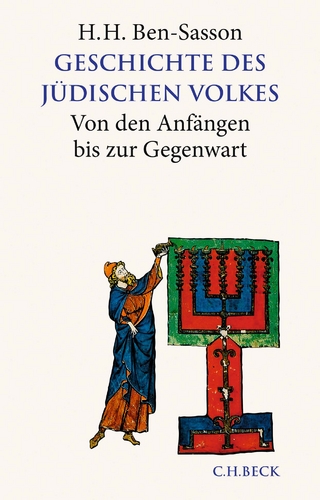
Nepal
Oxford University Press Inc (Verlag)
978-0-19-765093-6 (ISBN)
In this book, South Asia expert Axel Michaels covers the history of Nepal from prehistoric times and the period of the Licchavi dynasty through more recent developments, such as the rise of the republic, the first elections challenged by the Maoist insurgency (1996-2006), and the royal massacre in 2001. Chapters discuss the different principalities on the territory, among them the mysterious and legendary Mustang and Sherpa realms. Since the eighteenth century, these domains have been bundled into a contentious national history. Thus, going well beyond the center of power in the Kathmandu Valley, the book examines Nepal's relations with neighboring cultures in India, Tibet, and China, as well as the influence of British colonial power. It particularly focuses on its rich history of arts, architecture, and handicrafts. Although the Buddha was born in Nepal, the country is the world's last Hindu kingdom and is also a stronghold of Tantric traditions, shamanism, and many folk religions whose festivals and rituals mark daily life.
Based on a wealth of primary sources in Nepali, Sanskrit, and other indigeneous languages, Nepal offers a comprehensive and updated history of this unique culture and history.
Axel Michaels is Senior Professor of Classical Indology and Religious Studies at the South Asia Institute, University of Heidelberg. A specialist in the legal and cultural history of South Asia, he is the author of Hinduism: Past and Present and Homo rituali: Hindu Rituals and its Significance for Ritual Theory (OUP, 2015), among other books.
Preface
Acknowledgments
Glossary
On the Spelling and Pronunciation of Indian and Nepalese Words
Chronology
Introduction
Chapter 1: The Country
Infrastructure
Mountains
Earthquakes
Water Resources
Forests and Holy Trees
Chapter 2: The Population
Migration
Social Structures and Hierarchies
The Position of Women
Nepal as a Multi-ethnic State
Chapter 3: The Religions
Buddhism
Hinduism
Religious Syncretism and Tolerance
Chapter 4: Scattered Power and Petty Kingdoms: The Country before the Fourteenth Century
Prehistory
The Kirata
The Licchavi and Abhira-Gupta Period
The Early Medieval Period
The Khasa-Malla in West Nepal
Petty Kingdoms
Chapter 5: Divided Rule: The Malla Kingdoms, Thirteenth to Eighteenth Century
The Malla Rulers
The Urban Culture of the Newars
The Three Royal Cities of the Kathmandu Valley
Chapter 6: From Gorkha to Nepal: The Imperial Saha Monarchy, 1768/69-1846
Prthvinarayana and His Followers
The Consolidation of Gorkhali Power
Anglo-British Encounters
Sino-Tibetan Encounters
Chapter 7: Patrimonial Rule: The Rana Period, 1846-1951
The Kivara Rana, 1846-1885
The Samsera Rana, 1885-1951
Landholding and Agriculture
Labor and Slavery
Economy and Trade
The Legal and Administrative System
Education and the Media
Healing Systems and Shamanism
Hunting and Elephants
Rana Architecture
The Legacy of the Saha and Rana Periods
Chapter 8: From Monarchy to Republic, 1951-2022
The Restoration of the Sahas
The Maoist Insurgency
The Decline of the Monarchy and the Emergence of Democracy
Power and Authority: King, Prime Minister, and Maoist Leader
Administration and Law
The Urbanization of the Kathmandu Valley
Literature, Art, and Music
Chapter 9: Alliances and Resistance: Ethnic Groups and Their Histories
The Tarai: From Mithila to the Madhesi Uprising
The Sherpa
Mustang
The Kiranti (Rai-Limbu) in Eastern Nepal
From Empire to Nation State
Conclusion
Appendices
The Sources
Lists of Rulers, Prime Ministers, and British Envoys
Notes
Bibliography
Index
| Erscheinungsdatum | 17.02.2024 |
|---|---|
| Zusatzinfo | 24 black and white halftones |
| Verlagsort | New York |
| Sprache | englisch |
| Maße | 168 x 229 mm |
| Gewicht | 726 g |
| Themenwelt | Geisteswissenschaften ► Geschichte ► Regional- / Ländergeschichte |
| Geschichte ► Teilgebiete der Geschichte ► Religionsgeschichte | |
| Geisteswissenschaften ► Religion / Theologie ► Buddhismus | |
| Geisteswissenschaften ► Religion / Theologie ► Hinduismus | |
| ISBN-10 | 0-19-765093-7 / 0197650937 |
| ISBN-13 | 978-0-19-765093-6 / 9780197650936 |
| Zustand | Neuware |
| Informationen gemäß Produktsicherheitsverordnung (GPSR) | |
| Haben Sie eine Frage zum Produkt? |
aus dem Bereich


